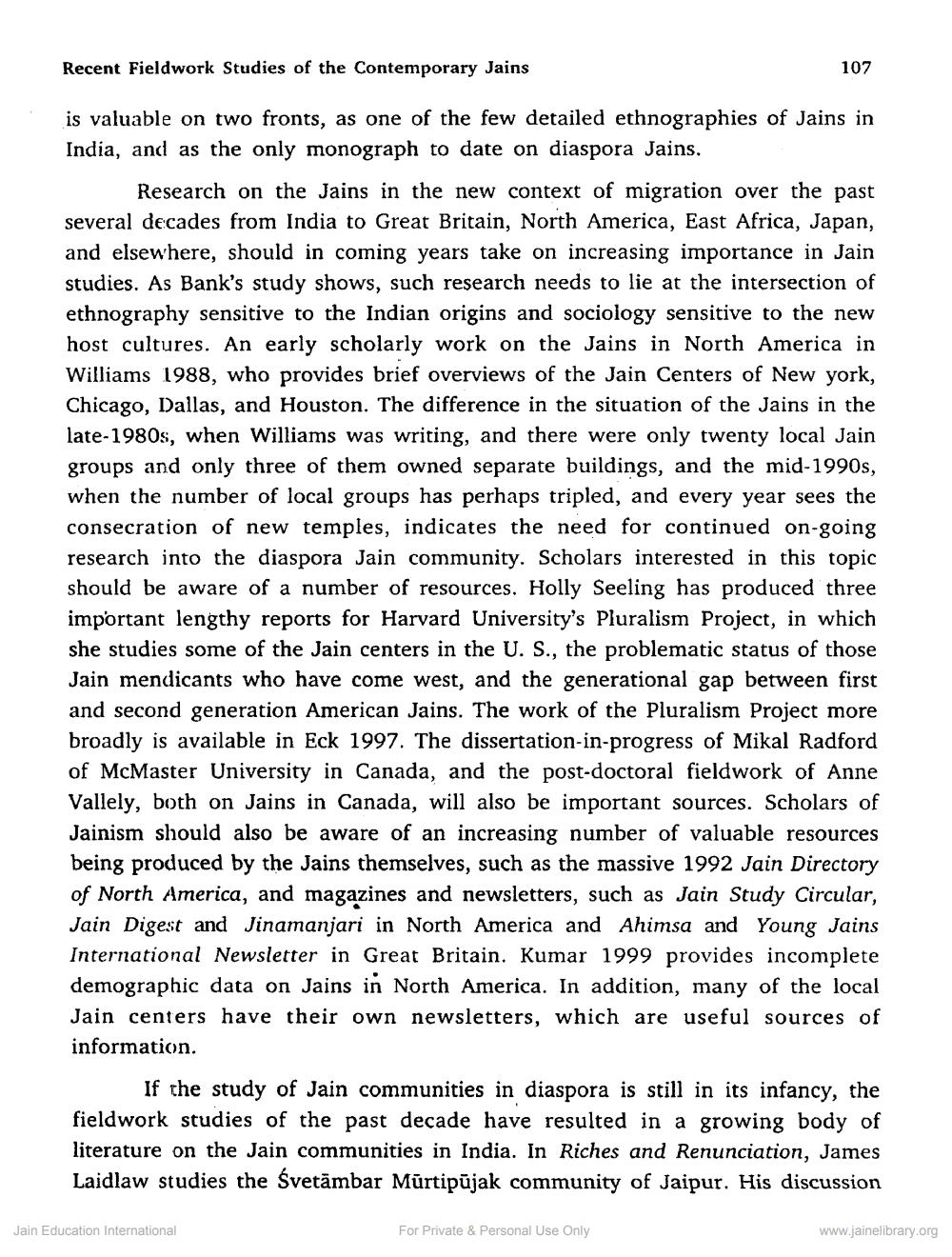________________
Recent Fieldwork Studies of the Contemporary Jains
107
is valuable on two fronts, as one of the few detailed ethnographies of Jains in India, and as the only monograph to date on diaspora Jains.
Research on the Jains in the new context of migration over the past several decades from India to Great Britain, North America, East Africa, Japan, and elsewhere, should in coming years take on increasing importance in Jain studies. As Bank's study shows, such research needs to lie at the intersection of ethnography sensitive to the Indian origins and sociology sensitive to the new host cultures. An early scholarly work on the Jains in North America in Williams 1988, who provides brief overviews of the Jain Centers of New york, Chicago, Dallas, and Houston. The difference in the situation of the Jains in the late-1980s, when Williams was writing, and there were only twenty local Jain groups and only three of them owned separate buildings, and the mid-1990s, when the number of local groups has perhaps tripled, and every year sees the consecration of new temples, indicates the need for continued on-going research into the diaspora Jain community. Scholars interested in this topic should be aware of a number of resources. Holly Seeling has produced three important lengthy reports for Harvard University's Pluralism Project, in which she studies some of the Jain centers in the U. S., the problematic status of those Jain mendicants who have come west, and the generational gap between first and second generation American Jains. The work of the Pluralism Project more broadly is available in Eck 1997. The dissertation-in-progress of Mikal Radford of McMaster University in Canada, and the post-doctoral fieldwork of Anne Vallely, both on Jains in Canada, will also be important sources. Scholars of Jainism should also be aware of an increasing number of valuable resources being produced by the Jains themselves, such as the massive 1992 Jain Directory of North America, and magazines and newsletters, such as Jain Study Circular, Jain Digest and Jinamanjari in North America and Ahimsa and Young Jains International Newsletter in Great Britain. Kumar 1999 provides incomplete demographic data on Jains in North America. In addition, many of the local Jain centers have their own newsletters, which are useful sources of information.
If the study of Jain communities in diaspora is still in its infancy, the fieldwork studies of the past decade have resulted in a growing body of literature on the Jain communities in India. In Riches and Renunciation, James Laidlaw studies the Svetāmbar Mürtipujak community of Jaipur. His discussion
Jain Education International
For Private & Personal Use Only
www.jainelibrary.org




